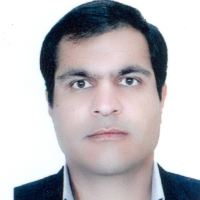Archaeological Introduction of Ancient Industrial Workshops for Metal Melting in South Khorasan, Zirkooh Based on Petrography and XRF Studies
Iranians’ knowledge of mines and minerals has a long history and, based on numerous pieces of evidence that show extensive search for and smelting of minerals since nine thousand years ago in all parts of Iran, Iranians’ position as pioneers in the ancient industry of mining and metallurgy has been confirmed. Iran is rich in terms of mineral deposits and mineral resources, including copper, which is thought to be the first metal used by prehistoric artisans. The abundance of copper deposits in Iran is one of the causes of the enormous growth of the metal smelting industry in antiquity. Unfortunately, in archaeological studies in Iran, ancient metallurgy processes have not been investigated in detail. Ancient metalworking is a cycle that was initiated by the mining and extraction of minerals, followed by melting of stones and extraction of metal from them, and ending in the production stage and distribution of the products. Each of the activities of this cycle has created pieces of archaeological evidence that by identifying and studying them an understanding of metalworking potential in the area and the capability of its residents in utilizing the facilities and ecological capacities, such as water resources, vegetation, and mineral deposits can be provided. Accumulation of the minerals rich in various metals in Khorasan and rich history in the production of metal works from prehistoric to Islamic times led to an emphasis on the dynamics of metalworking in eastern Iran by ancient writings. Southern Khorasan province includes a wide area of eastern Iran which, due to geological features and higher content of mines and metals, has been predominately considered as an important area for mining and metalworking studies. This study introduces ancient metalworking sites and compares the chemical compositions of slags found in the northeastern parts of South Khorasan (Zirkooh district) using XRF spectrometry and petrography studies.
- حق عضویت دریافتی صرف حمایت از نشریات عضو و نگهداری، تکمیل و توسعه مگیران میشود.
- پرداخت حق اشتراک و دانلود مقالات اجازه بازنشر آن در سایر رسانههای چاپی و دیجیتال را به کاربر نمیدهد.



